If you have a rubber plant with brown spots, you’re probably wondering what’s causing them and how to treat them. Brown spots on rubber plants can be caused by a number of things, including sun damage, pests, or disease. But don’t worry, there are a number of things you can do to treat brown spots on your rubber plant.
What Portions of the Plant Are Infected?
If you notice brown spots on your rubber plant, it’s important to determine which portions of the plant are infected. This will help you choose the most effective treatment option.
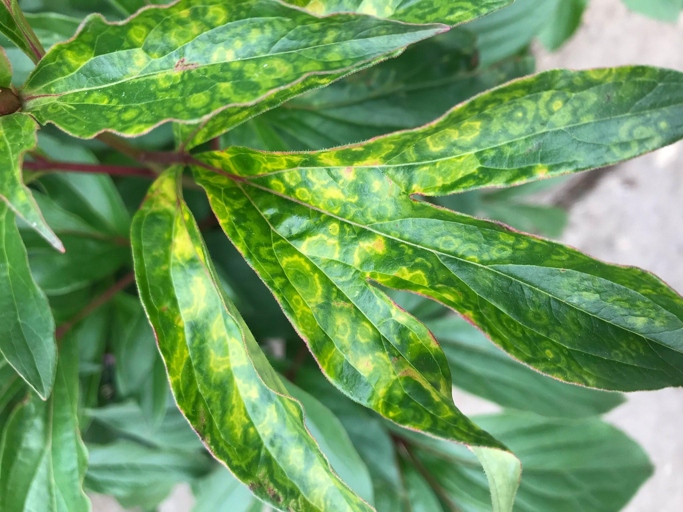
Look for brown spots on the leaves, stems, and roots. If you find spots on the leaves, they are likely to be caused by a fungal disease. The first step is to inspect the plant carefully. If the spots are on the stems or roots, they could be caused by a bacterial infection.
If the spots are on the leaves, you can try treating them with a fungicide. If the spots are on the stems or roots, you can try treating them with a bactericide. Once you know which parts of the plant are affected, you can choose the best treatment option.
What Causes Brown Spots on Rubber Plants?
If you notice brown spots on your rubber plant, don’t panic. There are a few possible causes, and fortunately, they’re all treatable.
If your plant is in a sunny spot, try moving it to a shadier location. If the spots are small and evenly distributed, it’s probably just sunburn. In this case, the spots will eventually fade on their own. One common cause of brown spots is too much sun.
Another possible cause is a fungal disease called Alternaria. If you think your plant has Alternaria, take it to a nursery or garden center for treatment. This disease is characterized by large, dark brown spots that can cover the entire leaf.

These pests suck the sap out of the plant, causing the leaves to turn brown. Finally, brown spots can also be caused by pests such as aphids or mealybugs. If you see any pests on your plant, remove them with a cotton swab dipped in rubbing alcohol.
Rubber Plant Algal Leaf Spot
If you notice brown spots on your rubber plant’s leaves, it’s likely due to algal leaf spot. This disease is caused by a type of algae that thrives in warm, humid conditions. Algal leaf spot is most common in the summer months, but can occur year-round in warm climates.
The spots may be surrounded by a yellow halo, and the leaves may eventually turn yellow and drop off. The algae can also cause the leaves to become sticky. Symptoms of algal leaf spot include brown or black spots on the leaves, which may be circular or irregular in shape.
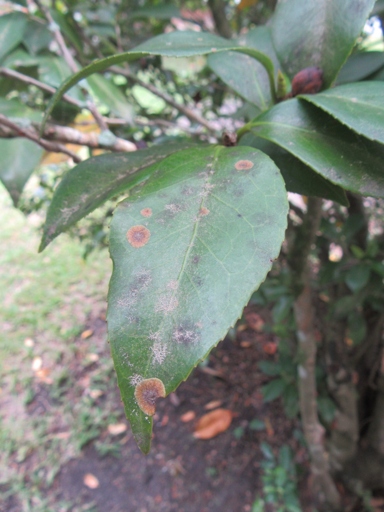
Algal leaf spot is most likely to occur on rubber plants that are grown in warm, humid conditions. To prevent the disease, make sure to water your plant in the morning so the leaves have time to dry before nightfall. If you live in a warm climate, consider moving your plant to a more shady location.
You can also treat the plant with a fungicide, but be sure to follow the directions carefully. If your plant does develop algal leaf spot, you can remove the affected leaves and dispose of them.
Symptoms
If you notice brown spots on your rubber plant, it’s important to take a closer look and determine the cause. Once you’ve determined the cause, you can take the appropriate steps to treat the problem and get your plant back to good health. These spots could be the result of a number of different factors, including sun damage, pests, or disease.
If your plant is in a spot that gets direct sunlight, the leaves can start to scorch and turn brown. To prevent this, make sure to give your plant some protection from the sun, either by moving it to a shadier spot or by providing some artificial shade. Sun damage is one of the most common causes of brown spots on rubber plants.
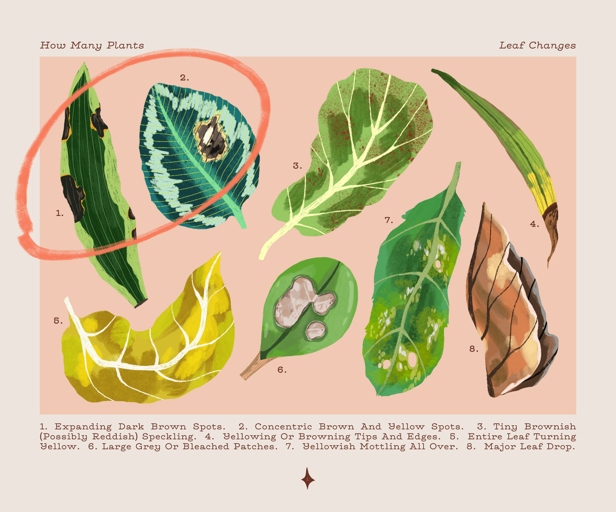
These pests can be controlled with regular applications of insecticidal soap or neem oil. Pests can also cause brown spots on rubber plants. If you see small, brown spots on the leaves, it’s likely that aphids or mealybugs are to blame.
To treat this disease, you’ll need to use a fungicide. Finally, disease can also cause brown spots on rubber plants. One of the most common diseases is leaf spot, which is caused by a fungus. If you see small, dark brown spots on the leaves, it’s likely that your plant has leaf spot.
Control and Management
If you notice brown spots on your rubber plant, don’t panic! There are a few possible causes, and fortunately, they’re all fairly easy to fix.
If your plant is in a sunny spot, try moving it to a shadier location. If the spots are small and evenly distributed, it’s probably just sun damage. In this case, the spots will eventually fade on their own. One common cause of brown spots is too much sun.
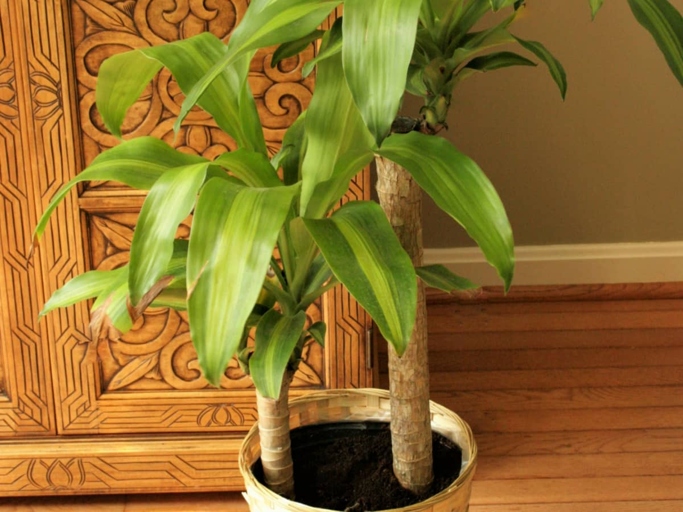
Another possible cause is over-watering. Let the soil dry out completely between waterings, and be sure to empty the drainage tray after watering. If the spots are large and irregularly shaped, it’s likely that your plant is getting too much water.
If the brown spots are accompanied by yellowing leaves, it could be a sign of nutrient deficiency. Fertilize your plant with a balanced fertilizer, and be sure to flush the soil periodically to prevent build-up of salts.
In this case, you’ll need to treat the plant with a fungicide. Finally, if the spots are dark and sunken, it could be a fungal disease.
Whatever the cause of your brown spots, a little TLC should get your plant back to its healthy self in no time!
Alternaria
The fungus thrives in warm, humid conditions and can cause leaves to brown and eventually drop off. Alternaria is a type of fungus that can affect a variety of plants, including rubber plants. Treatment for Alternaria is typically done with fungicides, but you can also try to prevent the fungus by keeping your rubber plant in a well-ventilated area and avoiding overwatering. If you notice brown spots on your rubber plant, it’s likely due to Alternaria.
Symptoms
Once you’ve determined the cause, you can take the appropriate steps to treat the problem. If you notice brown spots on your rubber plant, it’s important to take a closer look and determine the cause. These spots could be the result of a number of different factors, including disease, pests, or even stress.
If you suspect that your plant has anthracnose, it’s important to take action quickly. You can also try spraying the plant with a fungicide. The best way to treat this disease is to remove any affected leaves and destroy them. One of the most common causes of brown spots on rubber plants is a fungal disease known as anthracnose. This disease is characterized by small, dark brown spots that appear on the leaves.
Pests can also cause brown spots on rubber plants. If you notice mealybugs on your plant, you can remove them with a cotton swab dipped in rubbing alcohol. One of the most common culprits is the mealybug. These pests feed on the sap of the plant, which can cause the leaves to turn brown. You can also try spraying the plant with an insecticide.
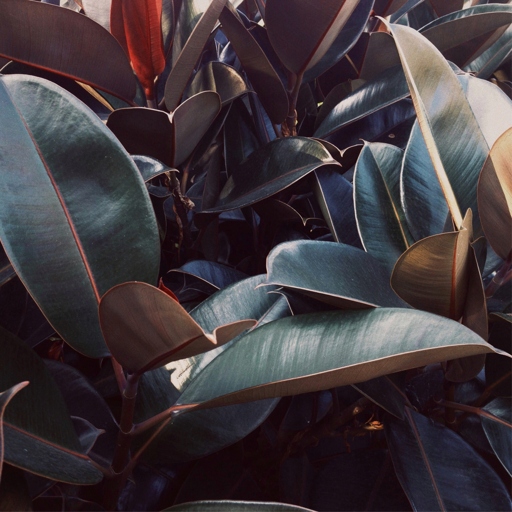
If your plant is not getting enough light or water, it may start to produce brown spots on the leaves. Finally, brown spots on rubber plants can also be caused by stress. If you think that stress may be the cause of the problem, try moving the plant to a brighter location or increasing the amount of water you give it.
Control and Management
Brown spots on rubber plants can be caused by a number of factors, including sun damage, pests, or disease. If you have a rubber plant with brown spots, you may be wondering what caused them and how to treat them. Luckily, there are a few things you can do to treat brown spots on your rubber plant.
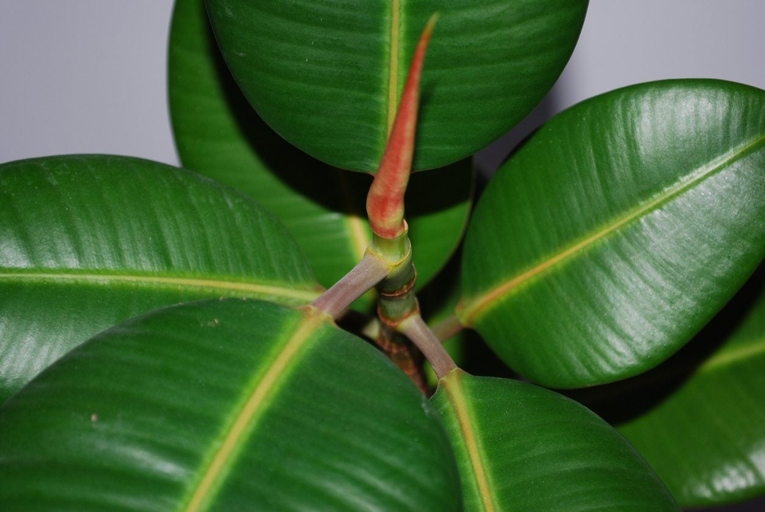
You can also try applying a sunscreen to the leaves to help protect them from further damage. If the brown spots are caused by sun damage, the best thing to do is move your plant to a location that gets less direct sunlight.
Be sure to follow the instructions on the label carefully to avoid harming your plant. If pests are the cause of the brown spots, you’ll need to treat the plant with an insecticide.
Again, be sure to follow the instructions on the label carefully. If the brown spots are caused by a disease, you’ll need to treat the plant with a fungicide.
With a little care and attention, you can get rid of brown spots on your rubber plant and keep it looking its best.
Anthracnose
While it’s not deadly to plants, it can cause significant damage. This fungal disease affects a variety of plants, causing leaf spots, blights, and fruit rot. If you notice brown spots on your rubber plant, it’s likely due to anthracnose.
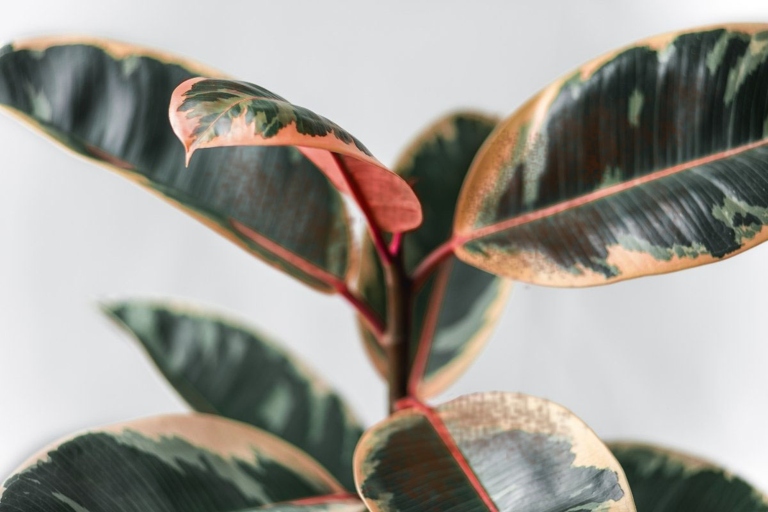
If the problem persists, you may need to consult a professional. There are a few things you can do to treat anthracnose. First, remove any affected leaves and dispose of them. Then, water your plant with a fungicide solution. You can also try spraying the leaves with a fungicide.
Symptoms
If you notice brown spots on your rubber plant, it’s important to determine the cause so that you can treat the plant accordingly. The most common causes of brown spots on rubber plants are sunburn, nutrient deficiency, and pests.
Sunburn is the most common cause of brown spots on rubber plants. If you think your plant has sunburn, move it to a shadier spot and make sure to provide it with plenty of water. The leaves of the plant are sensitive to sunlight and can easily get sunburned, especially if they are exposed to direct sunlight for extended periods of time.
Nutrient deficiency is another common cause of brown spots on rubber plants. If the plant is not getting enough nutrients, the leaves will start to turn brown. The most common nutrient deficiencies that cause brown spots on rubber plants are nitrogen and iron. You can treat nutrient deficiency by fertilizing the plant with a balanced fertilizer.

If the plant is infested with pests, the leaves will start to turn brown. You can treat pests by spraying the plant with an insecticidal soap or neem oil. The most common pests that cause brown spots on rubber plants are aphids and mealybugs. Pests are another common cause of brown spots on rubber plants.
Control and Management
Brown spots on rubber plants can be caused by a number of factors, including sun damage, pests, or disease. If you have a rubber plant with brown spots, you may be wondering what caused them and how to treat them. Luckily, there are a few things you can do to treat brown spots on your rubber plant.

No matter the cause, you can also try trimming off the affected leaves to help your plant recover. If the brown spots are caused by a disease, you may need to use a fungicide. If pests are the culprit, you’ll need to treat your plant with an insecticide. If the brown spots are caused by sun damage, the best thing to do is move your plant to a shadier spot.
With a little care, you can get rid of brown spots on your rubber plant and keep it looking its best.
Septoria Leaf Spot
The disease is characterized by brown spots on the leaves of the plant. The disease can cause the leaves of the plant to drop off. The spots may be circular or irregular in shape. Septoria leaf spot is a fungal disease that can affect rubber plants. The spots may be surrounded by a yellow halo.
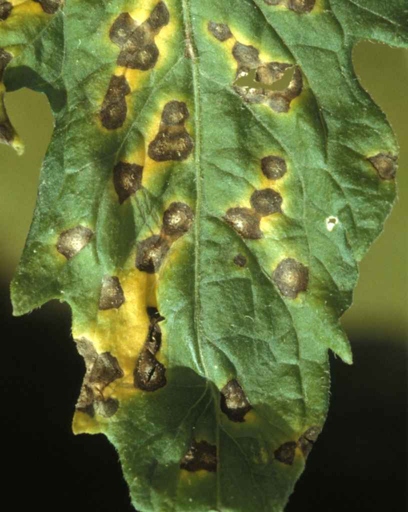
The fungus that causes septoria leaf spot is spread by water. The disease is most commonly seen in wet weather. The fungus can also be spread by wind and by contact with infected plant material. The disease can be controlled by avoiding overhead watering, by removing infected leaves, and by using a fungicide.
Symptoms
If you notice brown spots on your rubber plant, it’s important to identify the cause so you can treat the plant accordingly.
One common cause of brown spots on rubber plants is too much sun exposure. If the plant is in direct sunlight for too long, the leaves can start to scorch and brown. Move the plant to a shadier spot and make sure to provide plenty of water.
Another possible cause of brown spots is a fungal disease called anthracnose. This can be treated with a fungicide, but it’s important to catch it early.

With proper care, your plant should recover and the brown spots should eventually disappear. If you’re not sure what’s causing the brown spots on your rubber plant, take a sample of the affected leaves to your local nursery or gardening center for diagnosis.
Control and Management
Luckily, there are a few things you can do to get rid of brown spots on your rubber plant. Brown spots on rubber plants can be caused by a number of factors, including sun damage, pests, or disease. If you have a rubber plant with brown spots, you’re probably wondering what’s causing them and how to treat them.

If brown spots are caused by a disease, you may need to use a fungicide. If brown spots are caused by sun damage, the best thing to do is move your plant to a shady spot. If pests are the problem, you’ll need to treat your plant with an insecticide.
With a little care, your rubber plant will soon be looking green and healthy again. Whatever the cause of brown spots on your rubber plant, be sure to give it plenty of water and fertilize it regularly.
Downy Mildew
This disease is caused by a fungus that thrives in moist, humid conditions. If you notice brown spots on your rubber plant, it is likely due to a fungal disease called downy mildew. Downy mildew can be difficult to control once it gets started, so it is important to take preventive measures to avoid it.
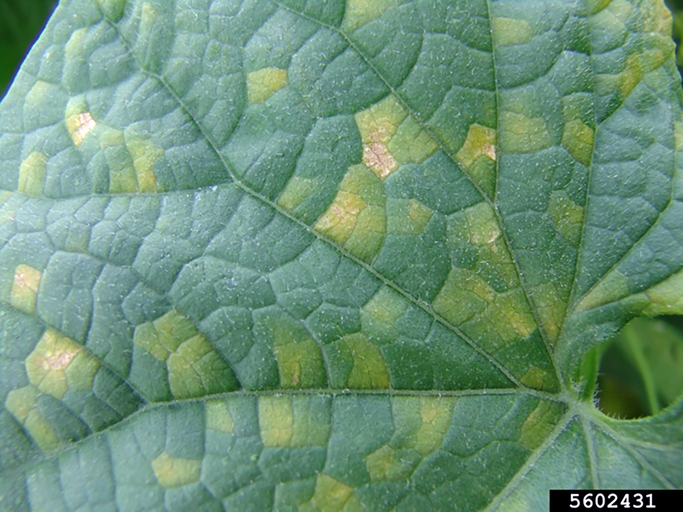
To prevent downy mildew, make sure your rubber plant is getting enough air circulation. If it is growing in a pot, make sure to water it from the bottom so that the leaves don’t stay wet for too long. You can also try using a fungicide to prevent the fungus from getting a foothold.
You may need to remove and destroy affected leaves to prevent the disease from spreading. If your plant does get downy mildew, you can try treating it with a fungicide. However, it is often difficult to get rid of the fungus completely.
Symptoms
If you notice brown spots on your rubber plant, it’s important to determine the cause so that you can treat the plant accordingly. The most common causes of brown spots on rubber plants are sunburn, nutrient deficiencies, and pests.
The leaves of the plant are very sensitive to sunlight and can easily get sunburned. Sunburn is the most common cause of brown spots on rubber plants. If you notice brown spots on your rubber plant, move it to a shadier location.

Nutrient deficiencies can also cause brown spots on rubber plants. To correct a nutrient deficiency, fertilize your plant with a balanced fertilizer. If your plant is not getting enough nitrogen, phosphorus, or potassium, the leaves will start to turn brown.
If you find pests on your plant, treat them with an appropriate pesticide. If you see brown spots on your plant, inspect the leaves for signs of pests. Common pests that attack rubber plants include aphids, scale, and mealybugs. Pests can also cause brown spots on rubber plants.
Control and Management
If the brown spots are due to pests, treat the plant with an appropriate pesticide. If they are due to too much sun exposure, move the plant to a shadier spot. If you have a rubber plant with brown spots, there are a few things you can do to control and manage the problem. If they are due to overwatering, allow the plant to dry out more between watering. First, try to identify the cause of the brown spots.
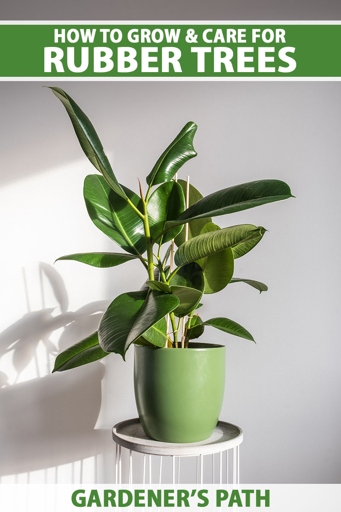
Once you have identified the cause of the brown spots, you can take steps to prevent them from happening again. If the brown spots were due to pests, keep an eye out for pests and treat the plant with a pesticide if necessary. If the brown spots were due to overwatering, be sure to water the plant less often. If the brown spots were due to too much sun exposure, make sure to give the plant enough shade.
Powdery Mildew
Treatment of powdery mildew typically involves the use of fungicides. As such, it is always best to follow the directions on the label carefully. However, it is important to note that these products can be harmful to humans and animals if used improperly. Powdery mildew is most likely to occur in humid or moist conditions. The fungus can spread quickly and easily from one plant to another. The spots may be circular or irregular in shape and can range in size from small to large. This disease is characterized by brown spots on the leaves of the plant. Powdery mildew is a type of fungus that can affect a variety of plants, including rubber plants.
Symptoms
These spots are usually caused by a fungal infection, and if left untreated, they can spread to the rest of the plant. If you notice brown spots on your rubber plant, it’s important to take action immediately. The good news is that there are a few things you can do to treat the problem.

This will help it to dry out quickly, which will discourage the growth of fungi. First, try to remove any affected leaves from the plant. You can find these solutions at your local garden center. Next, water the plant with a fungicide solution. Finally, make sure to keep the plant in a well-ventilated area. This will help to prevent the spread of the infection.
Control and Management
If you have a rubber plant with brown spots, you may be wondering what caused them and how to treat them.
One possibility is that the spots are caused by too much sun exposure. There are a few different reasons why your rubber plant may have brown spots. If your plant is in a sunny spot, try moving it to a location with more shade.
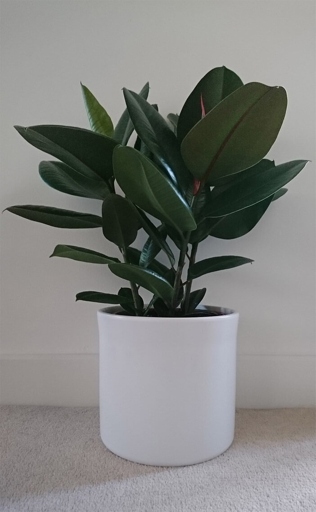
Another possibility is that the brown spots are caused by a fungal disease. If this is the case, you’ll need to treat the plant with a fungicide.
If you see any pests on your plant, you’ll need to remove them and treat the plant with an insecticide. Finally, brown spots can also be caused by pests.
If you’re not sure what’s causing the brown spots on your rubber plant, you can always take a sample of the affected leaves to a local nursery or garden center for diagnosis.
Bacterial Blight of Ficus Elastica
ficicola. The disease can spread quickly through a rubber plantation, and can also infect other plants in the same family, such as Ficus carica and Ficus benjamina. Bacterial blight of Ficus elastica is a serious disease that can quickly kill a rubber plant. The disease is caused by a bacterium called Pseudomonas syringae pv. This bacterium infects the leaves of the rubber plant, causing them to turn brown and die.
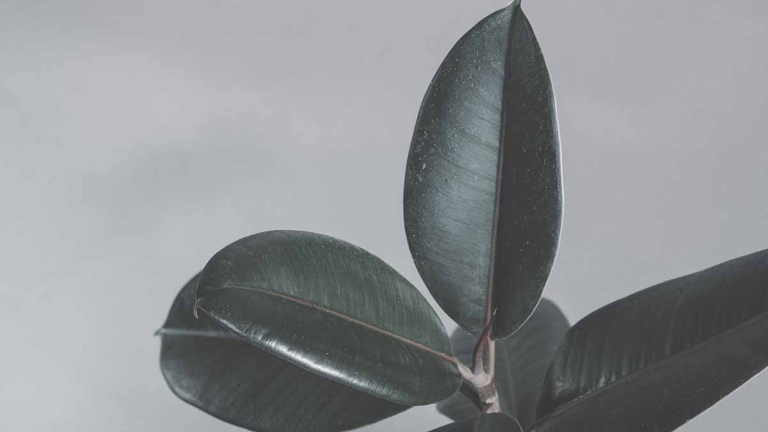
It is also important to water the plants with clean water and to avoid overhead watering, which can spread the bacteria. If the disease is severe, chemical controls may be necessary. To control bacterial blight, it is important to remove infected leaves from the plant and destroy them.
Symptoms
These spots are usually caused by a fungal disease called Alternaria, which can quickly spread to other parts of the plant. Left untreated, Alternaria can kill your rubber plant. If you notice brown spots on your rubber plant, it’s important to take action immediately.
Symptoms of Alternaria include brown or black spots on the leaves, stems, and flowers. The spots are often surrounded by a yellow halo. In severe cases, the entire leaf may turn brown and die.
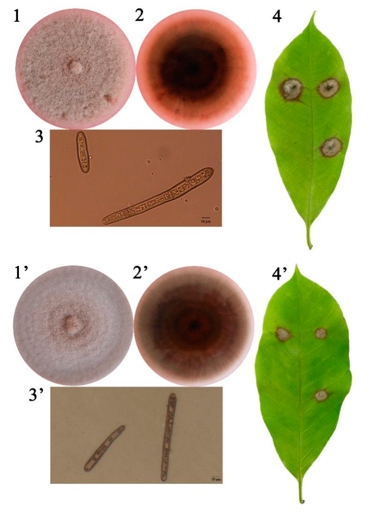
Be sure to follow the directions carefully, as fungicides can be toxic to humans and pets. If you think your rubber plant has Alternaria, take it to a local nursery or garden center for diagnosis. If the disease is confirmed, you’ll need to treat it with a fungicide.
Control and Management
If it’s not, move it to a brighter spot. If you have brown spots on your rubber plant, don’t worry–there are a few simple things you can do to get rid of them. Next, make sure the plant is getting enough light. Finally, water the plant regularly and fertilize it once a month. With a little care, your rubber plant will be back to its healthy self in no time! First, check the plant for pests. If you see any, treat them with an insecticide.
Root Rot
The roots of the plant become infected with a fungus, which causes them to rot. Root rot is a common problem with rubber plants. This can happen for a number of reasons, including overwatering, poor drainage, or using contaminated potting mix.
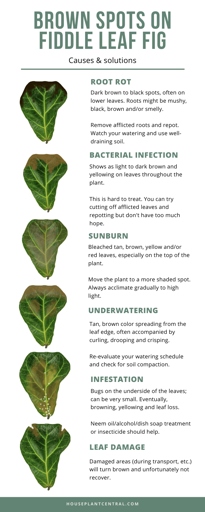
If the root rot is severe, the plant may die. Symptoms of root rot include brown or yellow leaves, wilting, and stunted growth. The plant may also drop its leaves.
Repot the plant in fresh potting mix and water it regularly. To treat root rot, remove the plant from its pot and inspect the roots. Be sure to water the plant only when the soil is dry to the touch. Cut away any roots that are brown or mushy.
Symptoms
The most common causes of brown spots on rubber plants are sunburn, pests, and disease. If you have brown spots on your rubber plant, it’s important to figure out the cause so you can treat the plant accordingly.
The leaves of the plant are very sensitive to sunlight and can easily get sunburned. Sunburn is the most common cause of brown spots on rubber plants. If you think your plant has sunburn, move it to a shadier spot and make sure to keep the leaves well-watered.

If you see any pests on the plant, such as aphids, mealybugs, or scale insects, you’ll need to treat the plant with an insecticide. Pests are another common cause of brown spots on rubber plants.
If you think your plant has a disease, you’ll need to take it to a professional for treatment. Disease is another possible cause of brown spots on rubber plants. The most common diseases that affect rubber plants are root rot and leaf spot.
Control and Management
If you notice brown spots on your rubber plant, don’t panic! In most cases, these spots are harmless and can be easily treated.
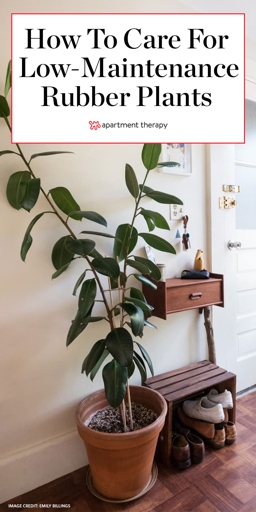
The best way to prevent this is to move your plant to a spot that gets indirect sunlight. If your plant is exposed to direct sunlight for too long, the leaves can start to brown. The most common cause of brown spots on rubber plants is sun damage. If the brown spots are already present, you can try trimming off the affected leaves.
Another possible cause of brown spots is over-watering. If you’re watering your plant too often, the roots can start to rot. This can cause the leaves to turn brown and eventually drop off. To prevent this, water your plant only when the soil is dry to the touch.
If you’re not sure what’s causing the brown spots on your rubber plant, take a sample of the affected leaves to your local nursery or garden center. They can help you diagnose the problem and recommend a treatment.
Nutrient Deficiency
If you notice brown spots on your rubber plant, it may be a sign of nutrient deficiency. While there are a number of possible causes, the most likely culprit is lack of essential nutrients in the soil.
Rubber plants are native to tropical regions and require a soil that is rich in nutrients. If the soil is not sufficiently nutritious, the plant will not be able to thrive. Brown spots on the leaves are often one of the first signs of nutrient deficiency.
First, try fertilizing the plant with a high-quality fertilizer that is specifically designed for tropical plants. There are a few simple ways to treat nutrient deficiency in rubber plants. If the brown spots do not improve after a few weeks, you may need to add additional nutrients to the soil, such as compost or manure.
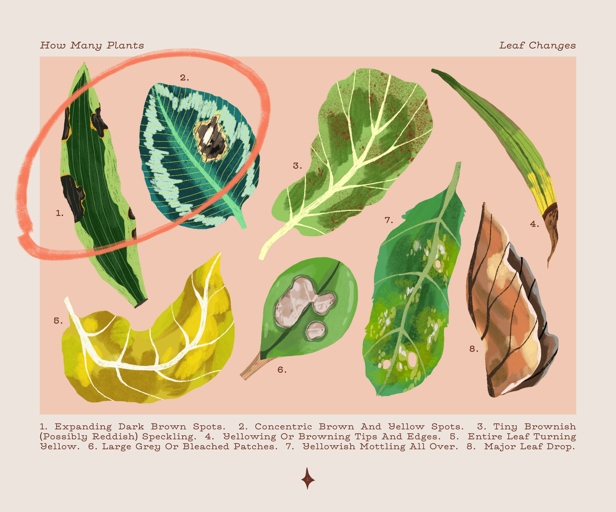
With proper care and attention, your rubber plant should soon be back to its healthy self!
Symptoms
The most common causes of brown spots on rubber plants are sunburn, pests, and disease. If you notice brown spots on your rubber plant, it’s important to determine the cause so that you can treat the plant accordingly.
The leaves of the plant are very sensitive to sunlight and can easily get sunburned. Sunburn is the most common cause of brown spots on rubber plants. If you notice brown spots on your rubber plant that are accompanied by yellowing or wilting leaves, it’s likely that the plant has been sunburned. The best way to treat sunburned leaves is to move the plant to a location that receives indirect sunlight.
If you notice that the brown spots are accompanied by small holes in the leaves, it’s likely that the plant has been infested with pests. The best way to treat a pest infestation is to remove the affected leaves and spray the plant with an insecticide. Pests can also cause brown spots on rubber plants.

If you notice that the brown spots are accompanied by discolored or wilted leaves, it’s likely that the plant has a disease. Disease can also cause brown spots on rubber plants. The best way to treat a diseased plant is to remove the affected leaves and spray the plant with a fungicide.
Control and Management
Brown spots on rubber plants can be caused by a number of factors, including sun damage, pests, or disease. If you have a rubber plant with brown spots, you may be wondering what caused them and how to treat them. Treating brown spots on rubber plants depends on the cause.
If you find pests, treat them with an appropriate insecticide. Pests can also cause brown spots on rubber plants. Sun damage is one of the most common causes of brown spots on rubber plants. Inspect your plant carefully for signs of pests such as aphids, mealybugs, or scale. If your plant is in a sunny spot, move it to a location with more shade.
If your plant is infected with a disease, you may need to treat it with a fungicide. Disease is another possible cause of brown spots on rubber plants.
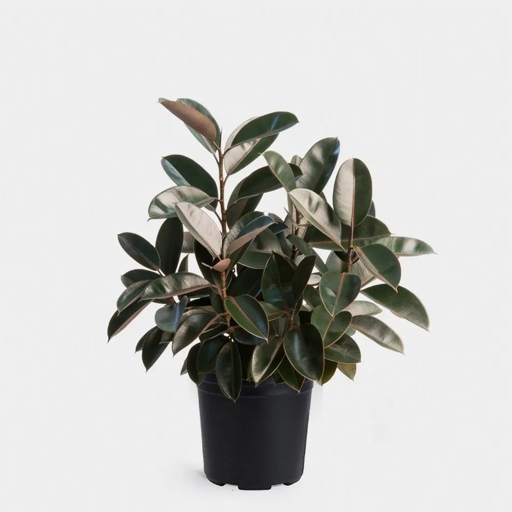
If you’re not sure what’s causing the brown spots on your rubber plant, take a sample of the affected leaves to your local nursery or Cooperative Extension office for diagnosis.
Edema On Rubber Plant Leaves
Edema is a condition caused by too much water in the plant’s tissues. If you notice brown spots on your rubber plant’s leaves, it’s likely due to edema. It’s often the result of overwatering or too much humidity.
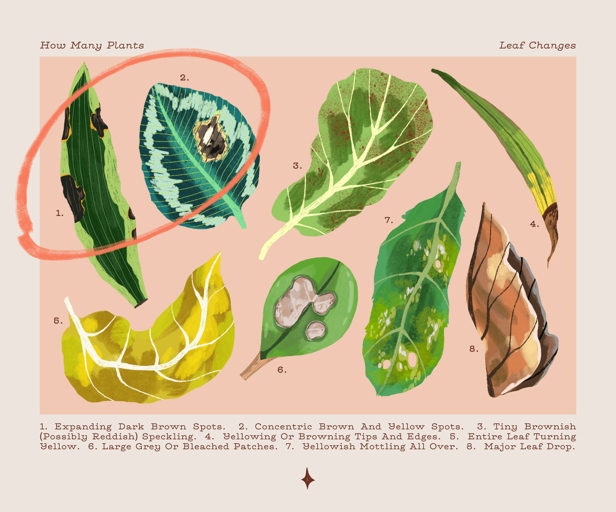
If the humidity is high, try moving the plant to a drier location. Allow the soil to dry out completely between waterings. If the problem persists, you may need to remove some of the affected leaves. To treat edema, start by cutting back on watering.
Symptoms
These spots could be the result of a number of different issues, including disease, pests, or even environmental stressors. If you notice brown spots on your rubber plant, it’s important to take a closer look and determine the cause. Once you’ve determined the cause, you can take the appropriate steps to treat the problem and get your plant back to good health.
One of the most common causes of brown spots on rubber plants is a fungal disease known as Alternaria. Alternaria can be treated with a fungicide, but it’s important to catch it early for the best chance of success. This disease is characterized by small, dark brown spots that appear on the leaves.
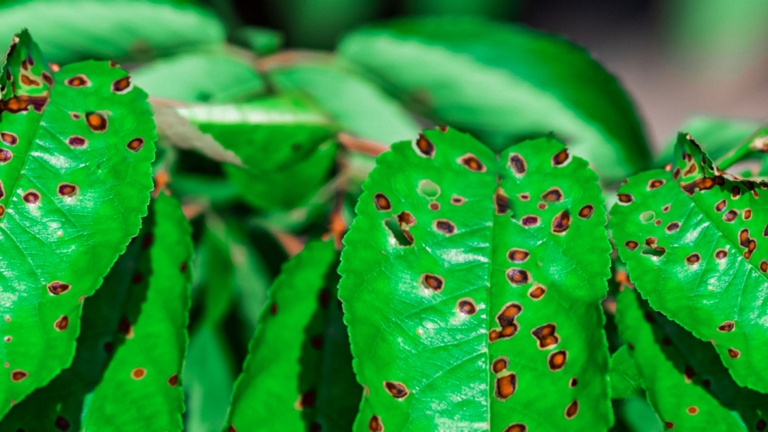
Aphids, mealybugs, and scale are all common culprits. These pests can be controlled with regular applications of insecticidal soap or horticultural oil. Pests are another common cause of brown spots on rubber plants.
Brown spots can also be caused by too much or too little water. If you think this may be the problem, try moving your plant to a shadier spot. Too much sun, for example, can cause the leaves to develop brown spots. Make sure you’re watering your plant regularly and not letting the soil dry out completely. Environmental stressors can also cause brown spots on rubber plants.
Control and Management
There are a few things you can do to manage and control the problem. If you have a rubber plant with brown spots, don’t despair!

First, it’s important to understand the cause of the brown spots. They are usually caused by one of two things: too much sun exposure or too much water. If the spots are small and evenly distributed, it’s likely that the plant is getting too much sun. If the spots are large and irregular, it’s likely that the plant is getting too much water.
Once you’ve determined the cause of the brown spots, you can take steps to control and manage the problem. If the spots are caused by too much sun, move the plant to a location with less sun exposure. If the spots are caused by too much water, adjust your watering schedule and make sure the plant is getting enough drainage.
With a little care and attention, you can keep your rubber plant healthy and free of brown spots!
Excess Light/Scorching
If you notice brown spots on your rubber plant, it’s likely due to excess light. The leaves of the plant are scorched from the sun’s rays.

To prevent this from happening, make sure to place your rubber plant in a spot that gets indirect sunlight. If the plant is already in a sunny spot, try moving it to a spot that gets some shade during the day.
This will help the plant to focus its energy on new growth. If the brown spots are severe, you can try trimming off the affected leaves.
Symptoms
These spots could be the result of a number of different things, including pests, disease, or even too much sun exposure. If you notice brown spots on your rubber plant, it’s important to take a closer look and determine the cause. Once you’ve determined the cause, you can take the appropriate steps to treat the problem.
These plants are native to tropical rainforests, so they prefer filtered light. If they’re exposed to direct sunlight for too long, the leaves can start to scorch and turn brown. One of the most common causes of brown spots on rubber plants is too much sun exposure. If you think this may be the problem, move your plant to a shadier spot and reduce the amount of time it spends in direct sunlight.
You can also try spraying the plant with a fungicide. This disease can cause brown or black spots on the leaves, as well as leaf drop. Another possible cause of brown spots is a fungal disease called anthracnose. If you think your plant may have anthracnose, it’s important to take action quickly. Remove any affected leaves and dispose of them properly.
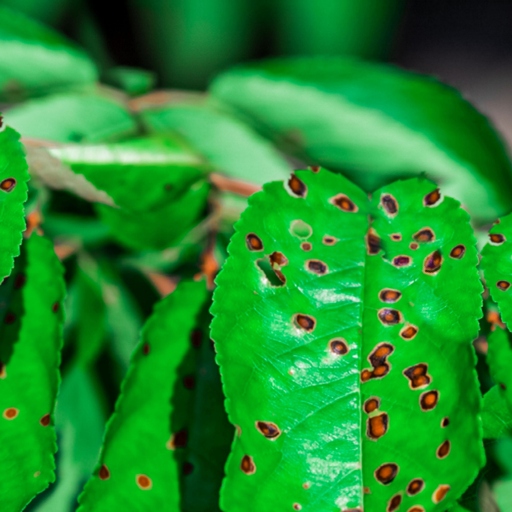
This can cause the leaves to turn yellow or brown and eventually drop off. One of the most common culprits is scale, which can attach itself to the leaves and suck out the plant’s sap. If you see scale on your plant, you’ll need to treat it with an insecticide. Pests can also cause brown spots on rubber plants.
They can help you identify the problem and recommend the best course of treatment. If you’re not sure what’s causing the brown spots on your rubber plant, it’s a good idea to take a sample of the affected leaves to your local nursery or garden center.
Control and Management
If you have a rubber plant with brown spots, don’t worry. There are several possible causes, and all of them are easily treated.
The most common cause of brown spots on rubber plants is too much sun. If the spots are small and evenly distributed, they will probably fade on their own. If your plant is in a sunny spot, move it to a place with more shade.

Another possible cause is a fungal disease called anthracnose. This can be treated with a fungicide.
If you see any pests on your plant, treat them with an appropriate insecticide. Finally, brown spots can also be caused by pests such as scale or mealybugs.
Frost Damage
This can cause the cell walls to rupture, leading to wilting and dieback. In severe cases, the plant may be completely killed. While it is not always fatal, it can cause extensive damage to plants. Frost damage can occur when temperatures drop below freezing, causing the water in the plant cells to freeze. Frost damage is one of the most common problems that gardeners face.

To prevent frost damage, gardeners should water their plants deeply and mulch around the base of the plant. This will help insulate the roots and prevent the plant from drying out. However, it can also occur during the winter, if temperatures drop suddenly. If you suspect that your plant has been damaged by frost, you should bring it indoors and place it in a warm, sunny location. Frost damage is most likely to occur during the spring and fall, when temperatures are fluctuating.
Symptoms
The most common causes of brown spots on rubber plants are sunburn, fungal diseases, and insect infestations. If you notice brown spots on your rubber plant, it’s important to determine the cause so that you can treat the plant accordingly.
The leaves of the plant are very sensitive to sunlight and can easily get sunburned. Sunburn is the most common cause of brown spots on rubber plants. If you think your plant has sunburn, move it to a shadier spot and make sure to provide adequate water.

Fungal diseases are another common cause of brown spots on rubber plants. These diseases are often caused by too much moisture on the leaves of the plant. If you think your plant has a fungal disease, remove any affected leaves and make sure to provide good air circulation.
These infestations are often caused by aphids, mealybugs, or scale insects. If you think your plant has an insect infestation, treat it with an insecticide. Insect infestations are another common cause of brown spots on rubber plants.
Control and Management
If the brown spots are due to pests, treat the plant with an insecticide. If they are due to too much sun exposure, move the plant to a shadier spot. If you have a rubber plant with brown spots, there are a few things you can do to control and manage the problem. If the brown spots are due to disease, treat the plant with a fungicide. First, try to identify the cause of the brown spots.

If the brown spots are due to too much sun exposure, move the plant to a shadier spot. Once you have identified the cause of the brown spots, you can take steps to control and manage the problem. If the brown spots are due to disease, treat the plant with a fungicide. If the brown spots are due to pests, treat the plant with an insecticide.
Low Humidity
Rubber plants are native to tropical regions and need high humidity to thrive. If you notice brown spots on your rubber plant, it could be due to low humidity. If the air in your home is too dry, the leaves of your plant will start to turn brown and drop off.

If the brown spots are severe, you may need to increase the humidity gradually to avoid shocking your plant. To increase the humidity around your plant, you can mist the leaves with water or set the pot on a tray of pebbles and water. You can also use a humidifier to add moisture to the air.
Symptoms
If you notice brown spots on your rubber plant, it’s important to determine the cause so that you can treat the plant accordingly.

To correct this, simply move the plant to a spot that gets less sun. If the plant is in a spot that gets direct sunlight for more than a few hours each day, the leaves can start to develop brown spots. One common cause of brown spots on rubber plants is too much sun exposure.
These diseases can be difficult to control, so it’s important to take preventive measures such as not overwatering the plant and keeping the leaves dry. Another possible cause of brown spots is fungal or bacterial leaf spot. If the plant is already infected, you may need to use a fungicide or bactericide.
To prevent this, simply move the plant to a spot where it won’t be disturbed. Finally, brown spots can also be caused by physical damage to the leaves. If the plant is in a spot where it gets brushed up against frequently, the leaves can develop brown spots from the physical trauma.
Control and Management
Brown spots on rubber plants can be caused by a number of factors, including sun damage, pests, or disease. If you have a rubber plant with brown spots, you may be wondering what caused them and how to treat them. Luckily, there are a few things you can do to treat brown spots on your rubber plant.

If the brown spots are caused by disease, you may need to consult a professional for treatment options. If the brown spots are caused by pests, you can try treating them with an insecticide or fungicide. If the brown spots are caused by sun damage, the best thing to do is move your plant to a location that gets less direct sunlight.
With a little care and attention, you can get your rubber plant looking healthy and green in no time. No matter what the cause of the brown spots on your rubber plant, there are a few things you can do to treat them.
Insect Infestation
If you have brown spots on your rubber plant, it’s likely due to an insect infestation. These pests suck the sap from the plant, causing the leaves to turn brown and eventually drop off. The most common culprits are scale insects and mealybugs.
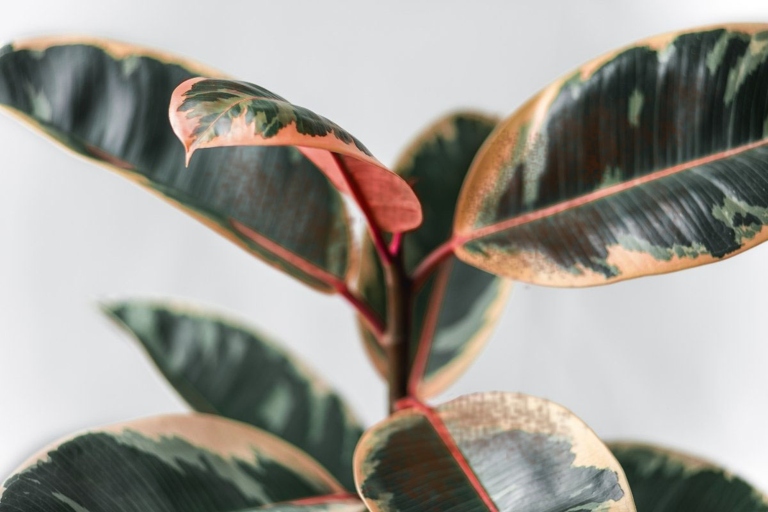
To get rid of these pests, you’ll need to treat the plant with an insecticide. Be sure to follow the directions on the label carefully, as over-application can harm the plant. You may need to treat the plant several times to completely get rid of the pests.
Symptoms
If you notice brown spots on your rubber plant, it’s important to take a closer look and determine the cause. Once you’ve determined the cause, you can take the appropriate steps to treat the problem. These spots could be the result of a number of different factors, including sun damage, pests, or disease.
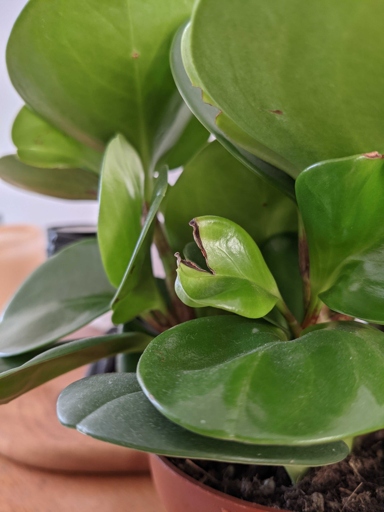
To prevent sun damage, move your plant to a location that gets indirect sunlight. If your plant is in a location that gets direct sunlight, the leaves can become scorched. This usually results in brown or yellow spots on the leaves. Sun damage is one of the most common causes of brown spots on rubber plants.
These pests can be controlled with the use of insecticidal soap or neem oil. Pests can also cause brown spots on rubber plants. If you see small, brown spots on the leaves, it’s likely that aphids or mealybugs are to blame.
In some cases, the use of fungicide may be necessary. Disease is another possible cause of brown spots on rubber plants. If your plant is infected with a fungal disease, you may see brown spots on the leaves, stems, or flowers. Treatment for a fungal disease will vary depending on the type of fungus involved.
Control and Management
If the brown spots are due to pests, treat the plant with an insecticide. If they’re due to too much sun exposure, move the plant to a shadier spot. If they’re due to overwatering, let the plant dry out a bit before watering again. You can also try to control the problem by pruning off affected leaves and stems. With a little care, your rubber plant will be back to its healthy self in no time! First, try to identify the cause of the brown spots. If you have brown spots on your rubber plant, don’t worry – there are a few things you can do to control and manage the problem.
Watering Problems
If you’re noticing brown spots on your rubber plant, it’s likely due to watering problems. Over- or underwatering can both cause leaf browning, so it’s important to get a handle on your plant’s watering needs.
Allow the top inch or so of soil to dry out before watering again. If you’re noticing that your plant’s leaves are turning brown and crispy, it’s likely due to underwatering. If your plant is wilting, that’s a sign that it’s not getting enough water.
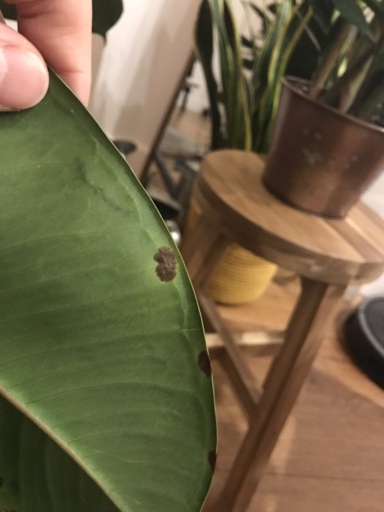
Allow the soil to dry out completely before watering again. You may also want to consider getting a moisture meter to help you keep an eye on the soil moisture levels. On the other hand, if you’re seeing brown spots that are mushy or have yellow halos, that’s a sign of overwatering.
Symptoms
If you notice brown spots on your rubber plant, it’s important to determine the cause so that you can treat the plant accordingly. The most common causes of brown spots on rubber plants are sunburn, nutrient deficiency, and pests.

The leaves of the plant are very sensitive to sunlight and can easily get sunburned. Sunburn is the most common cause of brown spots on rubber plants. If you notice brown spots on your rubber plant that are accompanied by yellowing or wilting leaves, it’s likely that the plant has been sunburned. The best way to prevent sunburn is to keep your rubber plant out of direct sunlight.
The most common nutrient deficiencies that cause brown spots on rubber plants are nitrogen, phosphorus, and potassium. If the brown spots on your rubber plant are not accompanied by any other symptoms, it’s likely that the plant is suffering from a nutrient deficiency. If you suspect that your plant is suffering from a nutrient deficiency, you can try fertilizing it with a balanced fertilizer.
If you notice brown spots on your plant that are accompanied by small insects or sticky residue on the leaves, it’s likely that the plant is infested with pests. The best way to get rid of pests is to use an insecticide or hire a professional pest control company. Pests are another common cause of brown spots on rubber plants. Aphids, mealybugs, and scale insects are all common pests that can cause brown spots on the leaves of rubber plants.
Control and Management
Brown spots on rubber plants can be caused by a number of things, including sun damage, pests, or disease. If you have a rubber plant with brown spots, you’re probably wondering what’s causing them and how to treat them.
If the brown spots are caused by a disease, you may need to use a fungicide. To treat brown spots on your rubber plant, start by removing any affected leaves. If the spots are caused by sun damage, move your plant to a shadier spot. If pests are to blame, treat your plant with an insecticide.
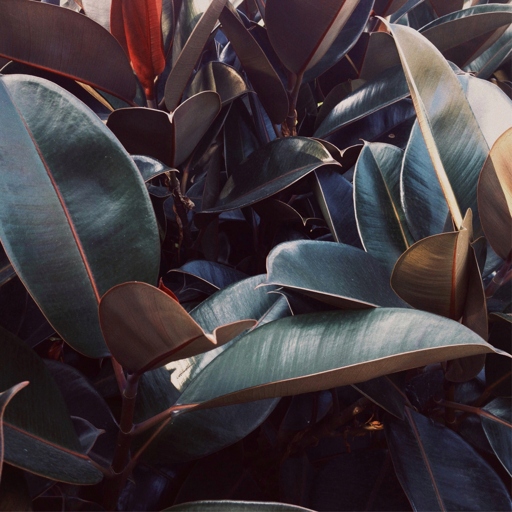
With proper care, your rubber plant should soon be back to its healthy self.
Fertilizer Burn
If the problem persists, you may need to replant the rubber plant in fresh soil. It can be caused by over-fertilizing, using the wrong type of fertilizer, or simply by not watering the plant enough. Fertilizer burn will cause the leaves of the plant to turn brown and eventually drop off. If you think your plant has fertilizer burn, the best thing to do is to stop fertilizing it and to start watering it more frequently. Fertilizer burn is one of the most common problems when it comes to growing rubber plants.
Symptoms
If you notice brown spots on your rubber plant, it’s important to take action quickly. These spots are usually a sign of a disease or pest infestation and can quickly spread to other parts of the plant. left untreated, these problems can kill your rubber plant.
The most common cause of brown spots on rubber plants is a fungal disease called Alternaria. The best way to treat Alternaria is with a fungicide that is specifically labeled for use on rubber plants. Alternaria can spread quickly, so it’s important to treat it as soon as you notice it. This disease is characterized by small, dark brown spots that appear on the leaves.
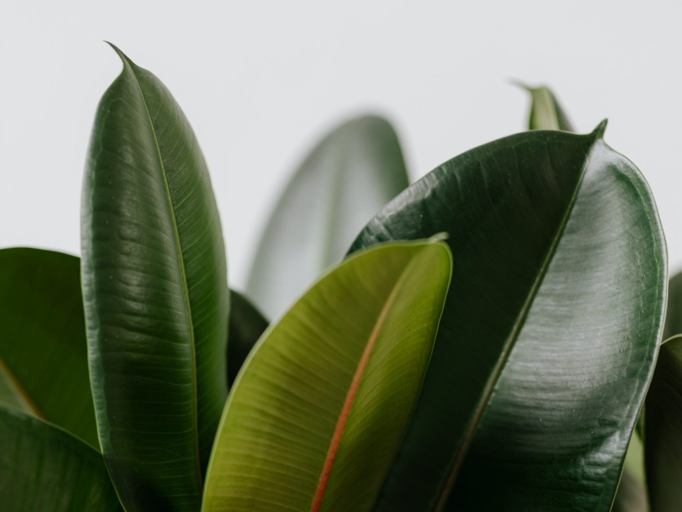
One is to physically remove the insects from the plant. Another is to treat the plant with an insecticide. Scale infestations are usually easy to spot because the insects themselves are visible on the leaves. Scale can be difficult to control, but there are a few different methods you can try. Another common problem that can cause brown spots on rubber plants is scale. Scale is a type of insect that feeds on the sap of plants.
Once you know what the problem is, you can take the appropriate steps to treat it and keep your plant healthy. If you’re not sure what’s causing the brown spots on your rubber plant, it’s best to take it to a professional for diagnosis.
Control and Management
There are a few things you can do to control and manage the problem. If you have brown spots on your rubber plant, don’t worry!

If you see any insects, remove them with a cotton swab dipped in rubbing alcohol. First, check the plant for pests.
Next, make sure the plant is getting enough light. If it’s in a low-light area, move it to a brighter spot.
Finally, water the plant regularly. Brown spots can be caused by drought stress, so make sure to keep the soil moist.
With a little care, your rubber plant will be back to its healthy self in no time!
How to Prevent Brown Spots on Rubber Plant
Use a water-soluble fertilizer and follow the package directions. First, make sure the plant is getting enough light. If you want to prevent brown spots on your rubber plant, there are a few things you can do. fourth, if you live in a humid climate, mist the plant regularly to increase the humidity around it. Third, fertilize the plant every month during the growing season. Rubber plants need bright, indirect light to thrive. Cut off the brown leaves at the base of the plant. fifth, if the leaves start to turn brown, you can remove them with a sharp knife. If the plant is not getting enough light, the leaves will start to turn brown. Second, water the plant regularly. Allow the top inch of soil to dry out before watering again. Rubber plants like to be kept moist, but not wet.
Frequently Asked Questions
1. Why do rubber plants develop brown spots?
There are a few reasons why rubber plants may develop brown spots. One reason is due to too much sun exposure. Another reason is due to a lack of nutrients, which can be caused by over- or underwatering the plant. Finally, brown spots can also be caused by pests or diseases.
2. How can I tell if my rubber plant has brown spots due to too much sun exposure?
If the brown spots are located on the leaves that are closest to the window or on the side of the plant that receives the most sun, then it is likely that the spots are due to too much sun exposure.
3. How can I tell if my rubber plant has brown spots due to a lack of nutrients?
If the brown spots are located on the newest leaves or all over the plant, it is likely that the spots are due to a lack of nutrients.
4. How can I tell if my rubber plant has brown spots due to pests or diseases?
If the brown spots are located on the underside of the leaves or on the stems, it is likely that the spots are due to pests or diseases.
5. How can I treat brown spots on my rubber plant that are due to too much sun exposure?
If the brown spots are due to too much sun exposure, you can move the plant to a location that receives less sun. You can also try to increase the humidity around the plant by misting it with water or placing it on a pebble tray.
6. How can I treat brown spots on my rubber plant that are due to a lack of nutrients?
If the brown spots are due to a lack of nutrients, you can fertilize the plant with a balanced fertilizer. You can also try to increase the humidity around the plant by misting it with water or placing it on a pebble tray.
7. How can I treat brown spots on my rubber plant that are due to pests or diseases?
If the brown spots are due to pests or diseases, you can try to remove the pests with a cotton swab dipped in rubbing alcohol. You can also try to treat the plant with a fungicide or insecticide.
Final thoughts
If you have brown spots on your rubber plant, it is important to figure out the cause so that you can treat it properly. Most likely, the brown spots are caused by either too much sun or too much water. If the spots are on the leaves that are exposed to the sun, move the plant to a shadier spot. If the spots are on the leaves that are getting too much water, make sure to water your plant less often.
